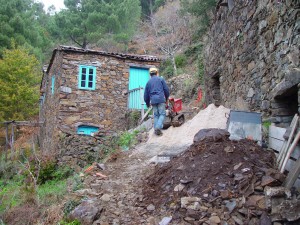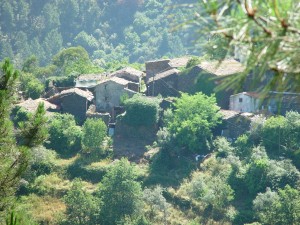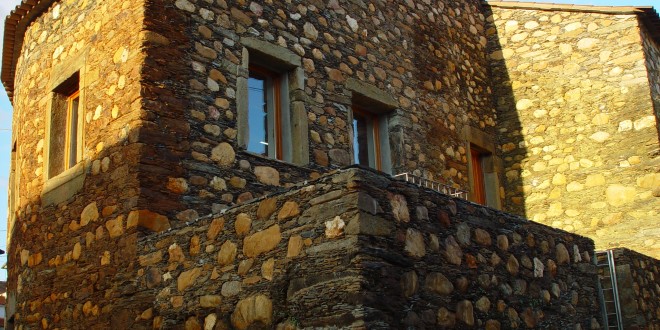Case 3
Schist Village
 The architectural style termed vernacular makes recourse to materials and the surrounding territory’s resources as building construction materials with the resulting projects sustainable in nature, integrated into the natural landscape and demonstrating strong local or regional identities. In Portugal, one of the most notable examples are schist constructions. Despite this type of construction being found to a greater or lesser extent nationwide (with much of mainland Portugal rich in this rock), they are particularly to the fore in the Centro region, in the beirãs regions.
The architectural style termed vernacular makes recourse to materials and the surrounding territory’s resources as building construction materials with the resulting projects sustainable in nature, integrated into the natural landscape and demonstrating strong local or regional identities. In Portugal, one of the most notable examples are schist constructions. Despite this type of construction being found to a greater or lesser extent nationwide (with much of mainland Portugal rich in this rock), they are particularly to the fore in the Centro region, in the beirãs regions.
Profoundly impacted by the migration of their populations to major urban centres and the corresponding desertification of the land, various councils in Coastal (1) and Inland (2) Beira began witnessing the disappearance of many of their smaller rural communities. Furthermore, with them, they not only lost the traditional schist architecture but also a highly rich ethnographic legacy.
In 2001, the CCDRC – Commission for Centro Regional Coordination and Development (3) took action and, through recourse to community funding, began implementing the Schist Village Program. This began with 24 villages in 14 councils across the Centro Region and now spans 27 villages in 16 councils.
The point of departure for applications to the program was through their Municipal Councils. Each council drafted its ‘Village Plans’, a working document resulting from a thorough study of each village, its surroundings and population. The ‘Village Plans’ enabled the definition of action lines in the terrain able to ensure the development of the intervention area. This implied everything from the installation of basic infrastructures (sanitation, water and electricity supplies) through to the refurbishment of spaces and public and private properties. This results in the recovery of built heritage and community spaces, an effective improvement in the standards of living of local inhabitants and the establishment of facilities for cultural preservation and renovation.
While the architectonic heritage of all these communities represents a factor bonding and characteristic of the project, the scope of the intervention objectives reaches far wider. The Program improved the qualifications of inhabitants of villages and businesses operating in the region through professional training programs. However, they also brought about the promotion of local products and tourism development activities in the villages. All of these facets, brought together under the banner of leveraging the tourism potential of the villages under the brand ‘Schist Villages’. This raises the profile of the area of intervention as a tourism destination of quality and distinction within the national range in this sector.
 In ‘Schist Villages’, visitors may discover the immense natural and ethnographic richness of Portugal’s Centro region, whether its gastronomy, culture or heritage and not to mention sport and engaging with nature. For example, there is an extensive range of river beaches in the area of intervention (4), many very close to locations where visitors can try many of the best dishes of the region. And all set off by some magnificent natural landscapes. In wandering these restored streets, it is perfectly possible to encounter traditional games and performances.
In ‘Schist Villages’, visitors may discover the immense natural and ethnographic richness of Portugal’s Centro region, whether its gastronomy, culture or heritage and not to mention sport and engaging with nature. For example, there is an extensive range of river beaches in the area of intervention (4), many very close to locations where visitors can try many of the best dishes of the region. And all set off by some magnificent natural landscapes. In wandering these restored streets, it is perfectly possible to encounter traditional games and performances.
The Schist Village Program enabled the recovery and preservation of a spectacular cultural richness while also ensuring an improvement in the standards of living of the local populations. Allied with the creation of wealth and employment, this has established the foundations ensuring the livelihoods and dynamics of these regions into the future.
www.pt.wikipedia.org/wiki/Rede_das_Aldeias_de_Xisto
Contacts:
ADXTUR – Agência de Desenvolvimento Turístico das Aldeias do Xisto Casa Grande
Centro Dinamizador das Aldeias do Xisto 6230-137 Barroca
Tel.: (+351) 275 647 700
Tlm.: (+351) 960 101 873
Email: info@aldeiasdoxisto.pt
Web: www.aldeiasdoxisto.pt
 Eco123 Revista da Economia e Ecologia
Eco123 Revista da Economia e Ecologia


